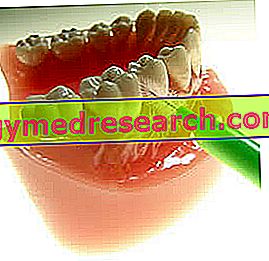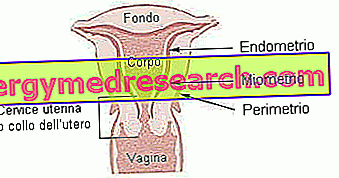What is the pipe cleaner for?
The toothbrush is an instrument for oral hygiene designed to obtain a deep cleaning between tooth and tooth, removing plaque deposits from the thin interdental spaces where the toothbrush does not normally arrive.

Similar to dental floss, the brush must be gently slid into the gap between the tooth and the tooth: in doing so, food, plaque and bacteria residues are also removed from the interdental spaces that are inaccessible to the toothbrush.
When neither the brush nor the common dental floss is used regularly, the bacteria hidden in the plaque and trapped between two neighboring teeth remain and proliferate even in the case of regular and excellent use of the electric or traditional toothbrush.
As did?
To give an immediate idea of the structure of the brush, let's think of a brush made to clean glass bottles; a common dishwashing sponge would not be able to carefully clean the space inside the bottle, since the surface of the sponge is too wide to enter from the small crack in the neck. Now, let's compare the neck of the bottle to an interdental space and the sponge to the toothbrush: the philosophy is almost the same: a sponge fails to enter from the neck of the bottle (therefore, clean the inside) just like a toothbrush cannot remove dirt and the bacteria wedged between tooth and tooth.
Here, then, that the only solution for deep cleaning the inside of the bottle is to obtain a specially made special brush: this instrument will be equipped with a flexible metal body on which soft bristles will be fixed that can adequately clean the inside of the bottle. Similarly, a tool has been designed to remove food residue and plaque from the interdental fissures: the pipe cleaner.
This "bizarre" tool is composed of two parts:
- Head: has a central semi-flexible metal core on which bristles of different length and thickness are inserted. The bristles, generally made of artificial fiber, are set so as to form a small cylinder or a cone.
- Handle: the length of the handle is comparable to that of a common toothbrush. The thickness of the handle, however, is generally much thinner.
Choice of the brush
It is important to choose the brush according to the characteristics of your teeth, to avoid forcing the gingival furrow too much, creating a useless swelling or causing bleeding of the gums.
There are many types of pipe cleaners, distinguished by the length of the handle and the characteristics of the bristles. On the market, pipe cleaners with bristles varying in length from 1.9 mm to 2.7 mm are available. Some pipe cleaners have a handle as long as a traditional toothbrush; others, instead - those for the handbag - have a small head, fixed on retractable handles and fitted with a hygiene-saving box. Then there are some disposable brushes, to be thrown away after a first application. More often, we recommend brushes with an interchangeable head, probably the cheapest and most efficient variant. These pipe cleaners can be reused 5-10 times; subsequently, the head is replaced with a new one, always maintaining the same grip.
Brush or floss?
As expressed in the previous paragraph, the choice of the most suitable instrument for cleaning interdental spaces depends on the structure of the teeth. The classic dental floss is undoubtedly more indicated to remove food remains stuck between narrow and narrow interdental cracks. The pipe cleaner, while having the same function, is more useful for cleaning large interdental spaces. For various reasons (such as the fall of the teeth), as the age advances the teeth begin to "make room", thus creating ample interdental fissures.
For example, in case of dental crowding and crooked teeth, the brush is not recommended because the space between tooth and tooth prevents the instrument from adequately performing its cleaning function. In such circumstances, dental floss can more easily remove dirt.
It is recommended to delegate to the dental hygienist or to your trusted dentist the choice of the most suitable instrument for interdental cleaning, be it a common interdental cord, a toothpick, a brush or any other type of dental floss.
Alternatives to the pipe cleaner
Patients who have obvious interdental spaces but who for some reason do not like using the brush can use other tools designed specifically for interdental hygiene. Among these, the most suitable ones seem to be wooden wedges and plastic toothpicks, indicated to remove pieces of food and plaque stuck in large interdental spaces. The wooden wedges are relatively flexible and their particular triangular section allows them to adapt perfectly to the natural structure of the interdental space. Unlike the plastic variant, these sharp wooden sticks tend to break easily; therefore, many patients claim to prefer plastic toothpicks, which are considerably longer in duration. The latter, however, have the disadvantage of being more rigid, consequently they do not adapt perfectly to the interdental space.
Compared to the alternatives just described, the brush is objectively better because it deeply cleans the space between tooth and tooth in a very delicate way. Furthermore, by exerting greater action on the gingiva, the brush stimulates the microcirculation, revealing an extraordinary dental device in the presence of gums withdrawn.
Scovolino: way of use, advantages, disadvantages »



